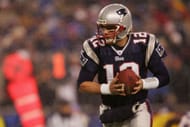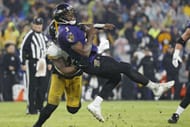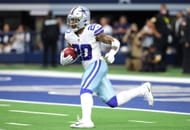The course of an NFL game has often been changed by some of the most egregious and erroneous rule changes in history. This, in turn, has altered the way the game has been played for years to come.
Throughout it all, NFL players have done their best to adjust to some brazen and disingenuous rules. However, while those very rules have become ingrained and a part of the very fabric of the league, the NFL has simply gotten it wrong in various instances.
Numerous rules and changes have been implemented over the years and we can’t help but scratch our heads at some of the befuddling outcomes. With countless rules to gaze upon, we’re fully convinced that we’ve peeled away some of the more intriguing ones.
Now, kick your feet up and take a read as we discuss their impact on the game overall.
#3 Tuck rule

In Tom Brady's second year in the NFL, he went on a historic run to begin his career before winning three Super Bowls in the next four seasons. However, Brady’s run and Hall of Fame-level career began with a bit of a fluky play.
During the Divisional Round of the 2001 postseason against the Oakland Raiders, Brady and the New England Patriots were down by 10 points in the final period. Although TB12 eventually marched them down the field to score a touchdown, New England found themselves down by 10 once again.
After getting a stop on the other side of the ball, the current Tampa Bay Buccaneers star got the football back with only a few minutes remaining. He dropped back in the pocket around the two-minute mark and attempted to fling the rock down the field. However, he was immediately blasted and lost the football.
As the game's referees huddled up, Brady was given a reprieve due to the tuck rule. During the replay, he was shown faking a pass down the field, which was enough for them to rule it as an incompletion and not a fumble.
One overtime and a couple of field goals later, the Patriots were deemed the winners.
#2 Babying the quarterback

Until recently, NFL quarterbacks were viewed as on the same level as every other position on the field. This meant regardless of whether a running back, wide receiver or quarterback received a pernicious hit, they would dust themselves off and move on to the next play.
The only instance where this rule did not apply was when the hit was egregious.
In today’s day and age, however, quarterbacks have been routinely babied. Over the past few seasons, an emphasis has been placed on the safety and well-being of every signal-caller in the league.
There is no denying that quarterbacks should be afforded some sort of added protection due to opposing teams doing their best to inflict irreversible harm. However, in some senses, things have gotten completely out of hand.
On numerous occasions, we’ve seen defensive ends beat offensive linemen to the spot, move them effortlessly out of the way, and make a beeline straight for the quarterback. If said QB is dragged to the ground and is landed upon by that very defensive end, or any defensive player, a flag will be thrown.
We’ve also seen countless occasions where if a quarterback is pushed innocuously to the turf, a sea of yellow flags will also be thrown.
The need to over-referee a certain game and protect a quarterback at all costs has simply gotten outta hand.
#1 Kick off 35 yard line

In an effort to reduce the number of injuries that occur during NFL kickoffs, the league has implemented a rule change.
With the game likely in the balance, NFL squads are normally unwilling to give opposing teams a chance to break the game open via special teams. So, with their punting trotting onto the field, they are normally instructed to kick the ball away from the opposing team’s returner and into the back of the end zone.
The reasoning was a simple one. When the football was kicked into the back of the end zone, the ball would be placed at the 25-yard line, forcing an NFL team to drive 75 yards down the field.
Yet in 2011, for whatever reason, the NFL decided it was time for a change. Now, when the football is kicked through the back of the end zone, the ball is placed at the 35-yard line.
This makes it increasingly easier for opposing squads to move up and down the field. Additionally, special teams units have essentially been rendered obsolete and antiquated.
On average, players racked up approximately 22.2 yards per kickoff return last season. With that in mind, coaches are more than willing to allow the football to bounce into the end zone and out of bounds on returns, giving them a shorter field. This inevitably has its effect on games and consequently, the results.
Also Read: 3 undervalued NFL quarterbacks to watch closely in the 2022 season
